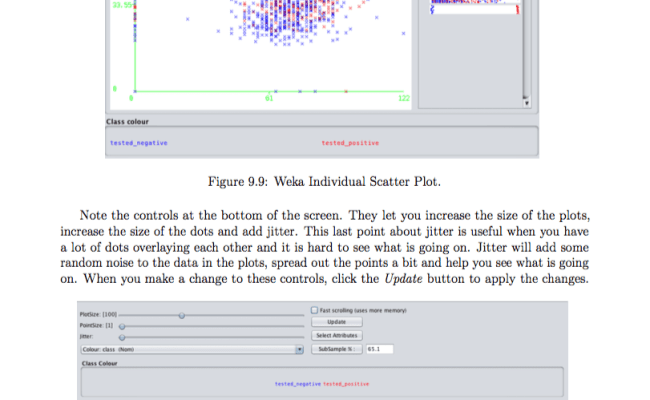
AI is an extremely powerful tool with many applications in environmental and social change. But, while it is certainly not perfect, it can be a powerful tool for NGOs, especially those that are struggling to meet their financial or staffing needs. To make AI work for social good, NGOs must have guidelines. Below are the guidelines. Here are four points that NGO leaders should be aware of:
Ethics
While AI for good projects tends to emphasize the goal of solving social problems and empowering peoples, they often ignore human rights and the rights people from the most disadvantaged groups. AI for social benefit can be defined as projects that help a specific group, but not considering the economic consequences. These AI projects often cause harm to those from disadvantaged groups. This raises important ethical issues about how these AI projects should be viewed.

Transparency
Transparency in many areas is important. An AI system's goals may not be clear. This can lead to confusion or even harm. An AI system that reminds users to take their medications may appear intrusive and could potentially cause harm. Such systems are not designed to make people do things. AI systems can be disabled by patients.
Diversity
AI4SG projects have to encourage inclusion and diversity. AI applications that are effective and inclusive will be the best. This is what Google hopes to achieve with its AI for Social Good program. To learn more about this program, click here. The Oxford Initiative on AIxSDGs provides a curated list of AI projects that aim at meeting SDGs. It currently indexes close 100 projects. This should allow for formal research in the field. The ITU AI Repository, and the AI Commons Knowledge Hub are other attempts to create a repository. Each has 71 members and supports 21 AI4SG project. Such meta-initiatives can combine the knowledge of AI4SG Projects and connect other organisations.
Trustworthiness
Recently, public policy discussions have been focused on AI trustworthiness. The European Commission High-Level Expert Group on Artificial Intelligence HLEG AI released its Ethics Guidelines to Trustworthy AI. They have already received a lot of traction from both research and practice. Other guidelines like the Principles of Socially Beneficial AI published in the White House or OECD share similar goals.
Collaboration
In recent years, the use of artificial intelligence (AI), for social benefit has become a popular trend. However, the question is how can it be put to good use. AI for social Good is a course that explores the potential use of AI to solve social problems. The course introduces the different AI techniques that can be applied to a variety of social issues. This course examines the ways that AI can be used to fight blight, improve police work, and train students and individuals.

Prices
It is important to consider the SDGs when assessing the cost of AI in social good. These goals are interrelated. It takes a collective effort to reach them. AI applications may benefit one SDG but harm another. AI for social change should reflect the interconnectedness of these SDGs. AI applications should maximise the net positive effect of AI on as many SDGs as possible while minimising their negative consequences.
FAQ
How will governments regulate AI?
Although AI is already being regulated by governments, there are still many things that they can do to improve their regulation. They should ensure that citizens have control over the use of their data. A company shouldn't misuse this power to use AI for unethical reasons.
They should also make sure we aren't creating an unfair playing ground between different types businesses. Small business owners who want to use AI for their business should be allowed to do this without restrictions from large companies.
Who is leading the AI market today?
Artificial Intelligence (AI), a subfield of computer science, focuses on the creation of intelligent machines that can perform tasks normally required by human intelligence. This includes speech recognition, translation, visual perceptual perception, reasoning, planning and learning.
There are many kinds of artificial intelligence technology available today. These include machine learning, neural networks and expert systems, genetic algorithms and fuzzy logic. Rule-based systems, case based reasoning, knowledge representation, ontology and ontology engine technologies.
There has been much debate over whether AI can understand human thoughts. Deep learning has made it possible for programs to perform certain tasks well, thanks to recent advances.
Google's DeepMind unit has become one of the most important developers of AI software. It was founded in 2010 by Demis Hassabis, previously the head of neuroscience at University College London. In 2014, DeepMind created AlphaGo, a program designed to play Go against a top professional player.
Where did AI come from?
Artificial intelligence was created in 1950 by Alan Turing, who suggested a test for intelligent machines. He stated that intelligent machines could trick people into believing they are talking to another person.
John McCarthy took the idea up and wrote an essay entitled "Can Machines think?" John McCarthy, who wrote an essay called "Can Machines think?" in 1956. He described in it the problems that AI researchers face and proposed possible solutions.
Who created AI?
Alan Turing
Turing was born 1912. His mother was a nurse and his father was a minister. At school, he excelled at mathematics but became depressed after being rejected by Cambridge University. He took up chess and won several tournaments. He worked as a codebreaker in Britain's Bletchley Park, where he cracked German codes.
He died in 1954.
John McCarthy
McCarthy was born in 1928. He was a Princeton University mathematician before joining MIT. He developed the LISP programming language. He had already created the foundations for modern AI by 1957.
He died in 2011.
What's the status of the AI Industry?
The AI industry is expanding at an incredible rate. The internet will connect to over 50 billion devices by 2020 according to some estimates. This means that everyone will be able to use AI technology on their phones, tablets, or laptops.
This means that businesses must adapt to the changing market in order stay competitive. Companies that don't adapt to this shift risk losing customers.
You need to ask yourself, what business model would you use in order to capitalize on these opportunities? Could you set up a platform for people to upload their data, and share it with other users. Perhaps you could also offer services such a voice recognition or image recognition.
No matter what you do, think about how your position could be compared to others. Even though you might not win every time, you can still win big if all you do is play your cards well and keep innovating.
How does AI work?
An algorithm is a set or instructions that tells the computer how to solve a particular problem. A sequence of steps can be used to express an algorithm. Each step has a condition that dictates when it should be executed. Each instruction is executed sequentially by the computer until all conditions have been met. This is repeated until the final result can be achieved.
Let's take, for example, the square root of 5. You could write down every single number between 1 and 10, calculate the square root for each one, and then take the average. That's not really practical, though, so instead, you could write down the following formula:
sqrt(x) x^0.5
This will tell you to square the input then divide it twice and multiply it by 2.
This is the same way a computer works. It takes your input, squares it, divides by 2, multiplies by 0.5, adds 1, subtracts 1, and finally outputs the answer.
AI: What is it used for?
Artificial intelligence (computer science) is the study of artificial behavior. It can be used in practical applications such a robotics, natural languages processing, game-playing, and other areas of computer science.
AI is also known as machine learning. It is the study and application of algorithms to help machines learn, even if they are not programmed.
Two main reasons AI is used are:
-
To make life easier.
-
To be able to do things better than ourselves.
Self-driving automobiles are an excellent example. AI can take the place of a driver.
Statistics
- According to the company's website, more than 800 financial firms use AlphaSense, including some Fortune 500 corporations. (builtin.com)
- By using BrainBox AI, commercial buildings can reduce total energy costs by 25% and improves occupant comfort by 60%. (analyticsinsight.net)
- In the first half of 2017, the company discovered and banned 300,000 terrorist-linked accounts, 95 percent of which were found by non-human, artificially intelligent machines. (builtin.com)
- More than 70 percent of users claim they book trips on their phones, review travel tips, and research local landmarks and restaurants. (builtin.com)
- In 2019, AI adoption among large companies increased by 47% compared to 2018, according to the latest Artificial IntelligenceIndex report. (marsner.com)
External Links
How To
How to Set Up Amazon Echo Dot
Amazon Echo Dot (small device) connects with your Wi-Fi network. You can use voice commands to control smart devices such as fans, thermostats, lights, and thermostats. To start listening to music and news, you can simply say "Alexa". You can ask questions, make phone calls, send texts, add calendar events, play video games, read the news and get driving directions. You can also order food from nearby restaurants. Bluetooth headphones and Bluetooth speakers (sold separately) can be used to connect the device, so music can be heard throughout the house.
An HDMI cable or wireless adapter can be used to connect your Alexa-enabled TV to your Alexa device. You can use the Echo Dot with multiple TVs by purchasing one wireless adapter. You can also pair multiple Echos at once, so they work together even if they aren't physically near each other.
Follow these steps to set up your Echo Dot
-
Your Echo Dot should be turned off
-
You can connect your Echo Dot using the included Ethernet port. Make sure that the power switch is off.
-
Open Alexa on your tablet or smartphone.
-
Choose Echo Dot from the available devices.
-
Select Add New Device.
-
Choose Echo Dot from the drop-down menu.
-
Follow the screen instructions.
-
When prompted, type the name you wish to give your Echo Dot.
-
Tap Allow access.
-
Wait until the Echo Dot has successfully connected to your Wi-Fi.
-
Repeat this process for all Echo Dots you plan to use.
-
Enjoy hands-free convenience